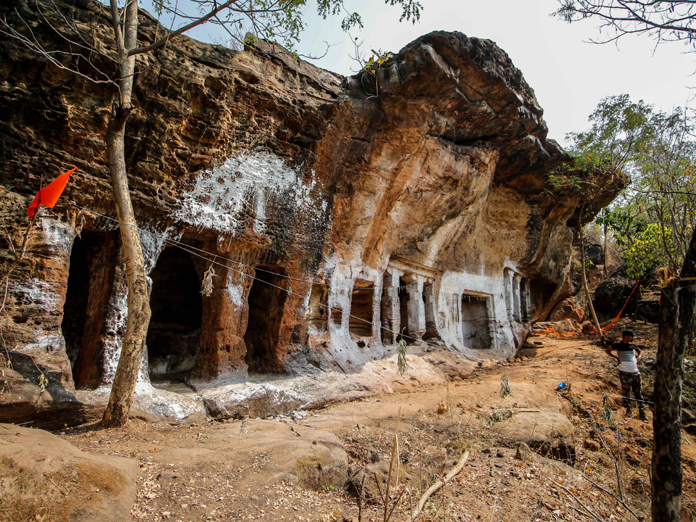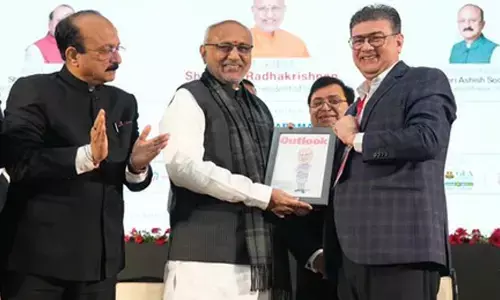Precious murals languish in neglect

There lies a cluster of rockcut cave temples, locally known as Nainag Gullu, on the banks of Manair River, hidden in the thickets of Koyyuru forest, 240 kilometers northeast of Hyderabad, craving for the States attention The caves of Adavi Somanapalli under Malhar Rao Mandal that come alive only during Maha Shivarathri festival is otherwise disconnected from mainstream of life
Bhupalpally: There lies a cluster of rock-cut cave temples, locally known as Nainag Gullu, on the banks of Manair River, hidden in the thickets of Koyyuru forest, 240 kilometers northeast of Hyderabad, craving for the State’s attention. The caves of Adavi Somanapalli under Malhar Rao Mandal that come alive only during Maha Shivarathri festival is otherwise disconnected from mainstream of life.
These rare cave structures believed to be of 7th or 8th century are said to be a manifestation of sculptural elegance that embellished in ancient India, according to Karimnagar Jilla Charitra Sanskruti book authored by eminent historian Jaishetty Ramanaiah. He had published more than a dozen books on history and bagged the State award in 2014.
“The ruined sculptures of Shivalingas, Ganapathi and Mahishasuramardhini in the caves are either idolised by Kalamukhus or Pashupathus,” noted epigraphist and Kotha Telangana Charitra Brundam (KTCB) member S Ramoju Haragopal told The Hans India.
The murals painted in the first rock-cut cave depict people in the kingly attire, archers, armed personnel, dancers, horses, palaces etc. The murals reminisce the style of Ajanta in Maharashtra. The second cave houses the sculpture of Mahishasuramardhini, which is in ruins. While the third cave has the idols of Lord Ganesh and a dwarapalaka, the last cave has two inscriptions etched in Telugu script of 12th Century.
The first inscription says that one Ekkati Vimana consecrated the Lord Rameshwara and sculptor was Kempena. The second inscription reveals that one Penukanti Muchireddy had donated land for the temple maintenance such as Dhoopa, Deepa, Naivedyam.
Unmindful of the historical significance, the locals whitewashed the caves some time ago. Following which, the State Archaeological Department swung into action and prepared a proposal to protect the indigenous art forms of the temple.
Tourism Consultant Aravind Arya Pakide said: “Unless measures are taken to remove the whitewash, the murals will be lost forever. It’s high time for the authorities to protect the caves from human intervention and preserve it for the future generations.
The caves offer a lot for the historians to unravel and explore the myths of hidden history.” The whitewash can be removed using chemical treatment, he added. It may be mentioned here that there was a proposal to include the caves in the State list of protected monuments since 2010.
Earlier, Adavai Somanapalli was in Karimnagar district. However, it now falls under the administration of Jayashankar-Bhupalpally district. To reach the caves, one has to trek through a jungle path from the Kataram–Manthani highway.















